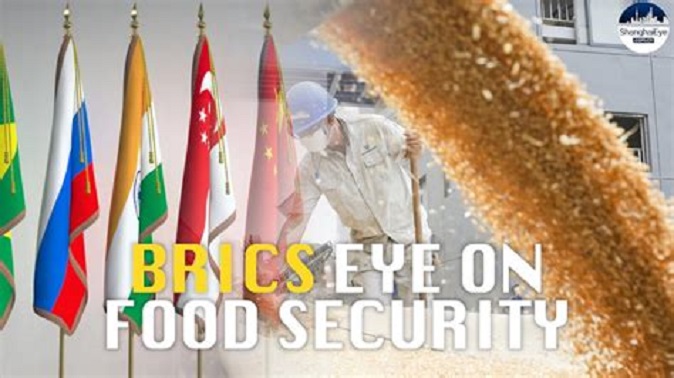
Proposal for a BRICS grain exchange: High-tech digital marketplace
In recent years, the international status of agriculture in the BRICS countries has continuously improved. As far back as 2018, the gross agricultural production of the BRICS countries accounted for more than 50% of the world’s total.
Further strengthening the developing cooperation of the BRICS countries is of great significance for ensuring global food security
A Russian proposal for a BRICS grain “exchange” – a high-tech digital marketplace – that would allow buyers to purchase directly from producers is gaining traction ahead of the BRICS in October, the head of the Russian Union of Grain Exporters said.
China and India are the world’s biggest wheat producers and Russia the biggest exporter of the grain so any exchange based on the BRICS grouping of Brazil, Russia, India, China and South Africa as well as Egypt, Ethiopia, Iran and United Arab Emirates would have global clout.
Eduard Zernin, head of the Russian Union of Grain Exporters (Rusgrain), told Reuters that he hoped organizational issues regarding the exchange should be resolved by this year’s planned BRICS summit in the Russian city of Kazan.
Zernin said the idea had support from other countries and businesses in a number of countries.”We have seen understanding and support for the initiative,” he said, adding, “Interest in our initiative is quite high.”
Zernin said the main problem with traditional commodity exchanges was that they were beholden to “speculators”, including hedge funds which trade derivatives of the commodity, and said this had led to prices below the cost of production. “We believe it is in the interest of both suppliers and buyers of real grain to eliminate such extreme volatility and add transparency and predictability to the world grain market”.
“We use the term “exchange” rather for reference. Ideally, we should be talking about a modern, high-tech digital marketplace,” Zernin said.
THE GRAIN EXCHANGE
Rusgrain floated the idea of a BRICS grain exchange in December 2023 and it gained the support of President Putin in early March this year.
Zernin said non-BRICS countries would also have access to the exchange, which he said was “not against the dollar”. “BRICS countries are the largest exporters of wheat, rice and corn,” he said. “Equally important is our contribution to the supply of pulses to the world market.”
“We do not insist on the exclusion of the dollar from grain settlements. But free conversion of the exchange’s clearing currency into roubles is critical for us,” Zernin said.
Russian grain exports are projected to reach 65 million metric tons in the current 2023/24 season, compared with 60 million tons in the previous marketing season. “So far, grain exports are progressing at a good pace, despite problems with settlements, insurance and trade financing,” Zernin said, adding that to date, about 47 million tons of grain have been exported from Russia, including about 36 million tons of wheat.
Russia’s main grain markets are Turkey, Egypt and Iran but it has also boosted exports to Algeria, Indonesia, Bangladesh.
“The markets for Russian grain now look more diversified than before the geopolitical crisis,” Zernin said.
“To compensate for the disappearance of international intermediaries from our supply chains, we focused on grain diplomacy, developing direct contacts with the world’s largest importers of wheat and other grains,” he added.
Watch video:
Sources:
- Yahoo Finance, March 19, 2024.
- Fastepo, April 3, 2024. (video)
- South China Morning Post, March 28, 2024. https://www.msn.com/en-xl/news/other/why-russia-wants-a-brics-grain-exchange-and-what-it-means-for-the-world/ar-BB1kBYNo
See also:
Sustainability, March 2020, 12(5), ‘Development and Prospect of Food Security Cooperation in the BRICS Countries’. https://doi.org/10.3390/su12052125